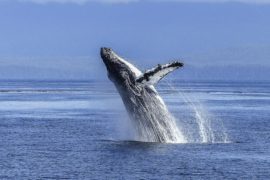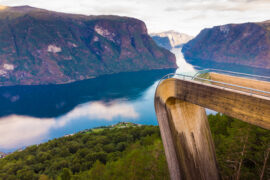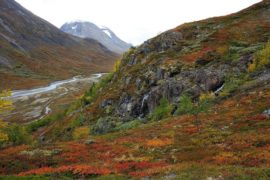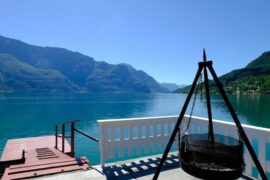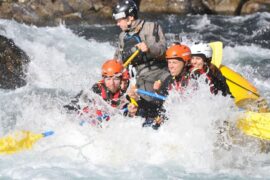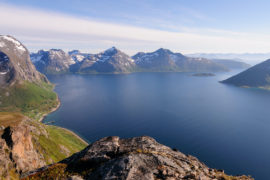Have you ever wondered what the most remote place in the world is? Picture this: a small, mysterious island located in the vast, icy expanse of the Southern Ocean – a place so isolated that even the most intrepid explorers would think twice before venturing there.
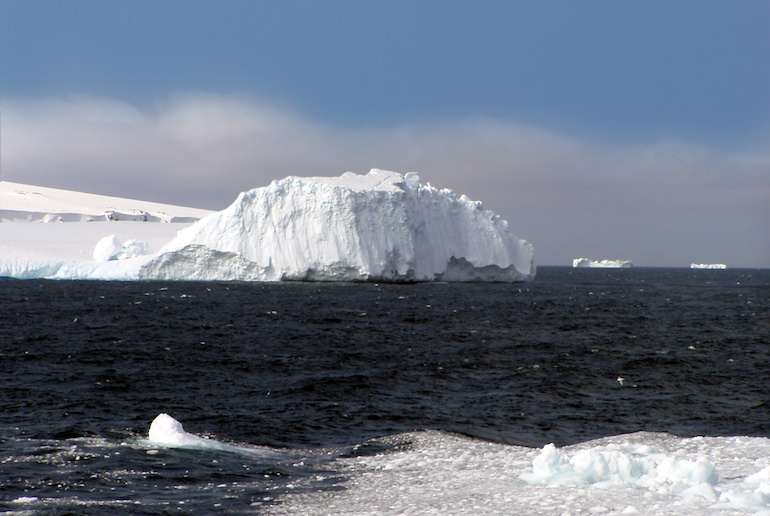
Well, hold on to your winter hats and brace yourself for an adventure to Bouvet Island – a place that’s kind of in Scandinavia… but also very, very far away.
Where is Bouvet Island?
Bouvet Island is an extremely remote island. It’s located in the South Atlantic, between Antarctica and South Africa.
The island is more than 1600km – or 860 nautical miles – from its nearest landmass. That ‘neighbour’ is Queen Maud Land in Antartica, which is itself very remote indeed!
But for those of us who love Scandinavia, Bouvet Island still holds a special appeal. Known as Bouvetøya in Norwegian, the island is actually a Norwegian territory – and politically, at least, it’s part of Scandinavia.
Just look at how remote it is!
History and ownership of Bouvet Island
Bouvet Island was first discovered in 1739 by Jean-Baptiste Charles Bouvet de Lozier, a French explorer, after whom the island is named.
However, the island remained unclaimed until 1825 when British whaler Captain Norris landed on the island. He renamed it Liverpool Island, and claimed it for the UK.
Then in 1927 the Norwegian whaler Lars Christensen landed on Bouvet during one of his Norvegia expeditions, claiming it for Norway.
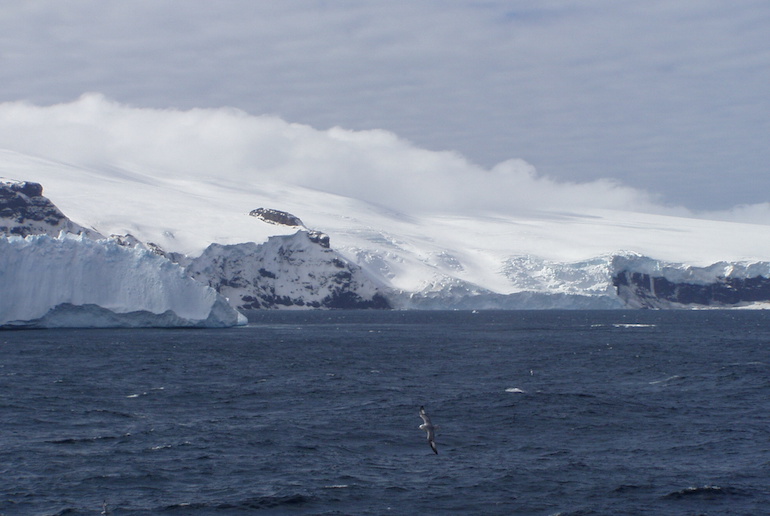
Two years later, the UK relinquished its claim to the island and in January 1928, by royal decree Bouvet Island became a Norwegian Territory.
Recognising its environmental significance, Norway declared Bouvet Island and its surrounding waters a nature reserve in 1971.
Since 1977, Norway has operated an automated meteorological station on the island, and also used it as a base for researching the feeding habits and distribution of fur seals.
The Bouvet Lifeboat
The “Bouvet Island Lifeboat” is a peculiar tale in the island’s history. In 1964, a Royal Navy helicopter landed on the island and discovered an abandoned lifeboat.
There was no sign of any life on the island, and no one knew where the lifeboat had come from or how it ended up there.
The lifeboat’s presence on Bouvet Island, far from any regular shipping routes, sparked speculation about its origin and the remarkable journey it may have undertaken.
To make things even more confounding a second expedition landed on the island two years later, and there was no sign of the lifeboat at all. It has completely disappeared! Spooky, right?
No-one really knows what happened to the lifeboat, but a possible explanation is that a Russian whaling fleet and scientific reconnaissance team, Slava, landed on the island in 1958 during bad weather and the crew was then helicoptered out to safety a few days later, leaving the lifeboat behind.
This doesn’t explain, however, why the lifeboat wasn’t seen by the second expedition, and no definitive solution to the mystery of the Bouvet Lifeboat has ever been found.
Geography of Bouvet Island
So, what is the island like in terms of its geography and natural features? Well, the terrain is mostly volcanic in nature.
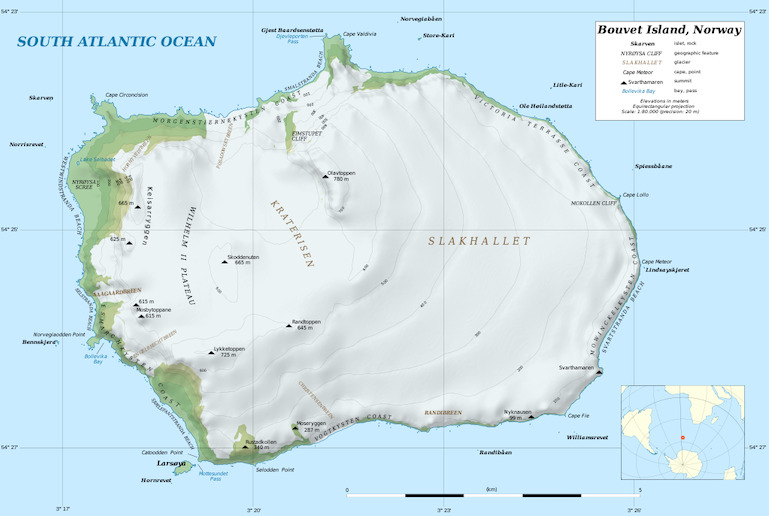
This means it has a very rugged landscape with steep cliffs and rocky coastlines.
And around 90 percent of the island is covered by a giant glacier. This impressive ice blanket gives Bouvet Island a striking and breathtaking appearance, making it sight to behold (and probably still a very welcome one if you’ve just sailed 1600km from the nearest landmass!).
The Bouvet Island Flag
The flag of Bouvet Island is identical to that of Norway, as the island falls under the Norwegian administration. There is no distinct flag specifically representing Bouvet Island.
What’s actually on the island?
Although Bouvet Island remains uninhabited by humans, it is home to a variety of species that have adapted to the island’s remote environment.
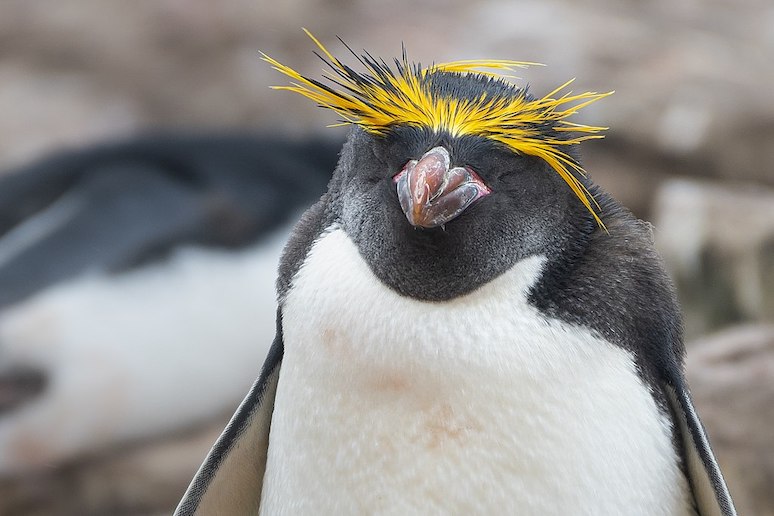
Fur seals, elephant seals, macaroni penguins and various seabirds all live on the island, and orcas and humpback whales live in the surrounding waters.
Together, these creatures create a bustling ecosystem amidst the isolated expanse of Bouvet Island, showcasing the resilience of life in even the most dramatic environments.
From November to February, there’s also a research base on the island, known as Norvegia, which studies and monitors the animals that live there.
Located on Nyrøysa in the northwest corner of the island, it serves as a hub for scientific research conducted by the Norwegian Polar Institute.
Travelling to Bouvet Island
Reaching this remote and inhospitable location is an extraordinary task. Due to its isolated position in the South Atlantic, Bouvet Island is virtually inaccessible to the general public.
Also, since it’s a nature reserve, tourism is banned on the island.
Occasional specialist nature cruises sail to the waters surrounding the island, but they can’t land on it.
So, pretty much the only way to visit Bouvet is on a scientific expedition, such as the 3Y0J Bouvet Island DXpedition which took place in February 2023.
The ISO code for Bouvet Island
An ISO code is a special code given to countries, territories, or special areas to identify and classify them. It helps simplify administrative processes and make international transactions and data organization easier.
So, why does Bouvet Island have an ISO code? As a dependency of Norway, Bouvet Island is entitled to its own ISO code, which is BV, or BVT074 in full.
Other Norwegian islands to explore
If you find Bouvet Island fascinating, consider exploring other Norwegian islands – like these 9 in the north of the country – or diving deeper into Norway’s geography and some of its other political territories, such as Svalbard.
See also:
Visiting Svalbard
Polar bear spotting in Svalbard
Nine amazing islands in Northern Norway


